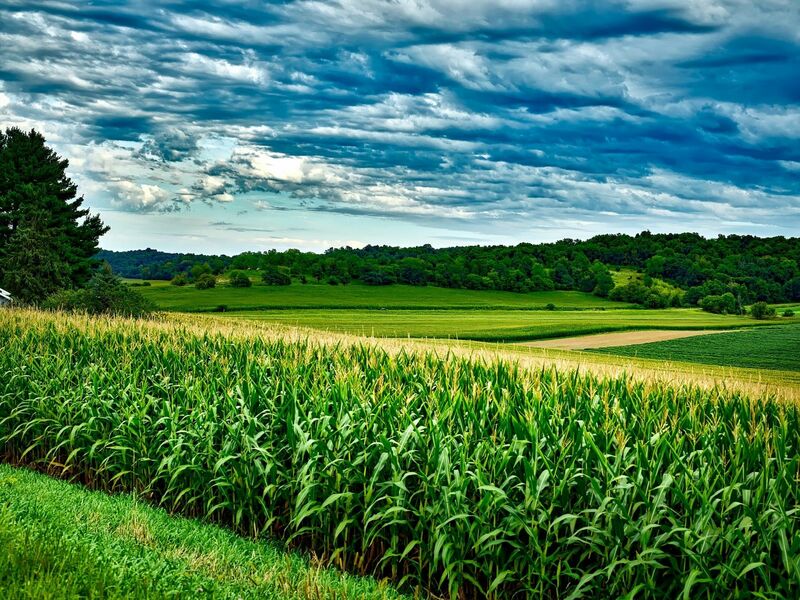|
|
|||
|
Name
Cash Bids
Market Data
News
Ag Commentary
Weather
Resources
|
Q2 in Grains and the Outlook for Q3
The grain and oilseed sector of the commodities market edged 0.30% lower in Q2 and was only 0.08% lower during the first six months of 2025. I concluded my Q1 Barchart report on the grain and oilseed sector with the following:
The sector experienced a marginal decline in Q2 and the first half of 2025, but low prices have yet to cure the low prices. Mixed results for soybeans and soybean products, againCBOT soybean futures edged marginally higher in Q2, posting a 0.94% gain and were 2.60% higher over the first six months of 2025. 
The quarterly chart highlights the long-term bullish trend despite the substantial decline from the 2022 high. Nearby soybean futures settled at $10.2425 per bushel on June 30, 2025. While soybean futures were marginally higher in Q2 and over the first six months of 2025, soybean products moved in opposite directions, with a decline in soybean meal and a rally in soybean oil. Soybean meal futures posted a 7.31% decline in Q2 and were 11.84% lower than the 2024 closing level on June 30, 2025. Nearby soybean meal futures were at the $271.30 per ton level at the end of Q2. Soybean oil futures rallied 16.97% in Q2 and were 32% higher over the first six months of 2025, settling at 52.51 cents per pound on June 30. The USDA increased its global beginning and ending 2025/2026 soybean stock forecast in the June WASDE report, indicating ample supplies to meet the worldwide demand. Corn prices dropCBOT corn futures declined by 8.04% in Q2 and were 8.29% lower over the first six months of 2025. 
While the quarterly CBOT corn futures display the same long-term bullish pattern of higher lows as soybeans, prices have declined substantially from the 2022 high, settling at $4.2050 per bushel as of June 30, 2025. The June WASDE report informed the corn market that U.S. and global inventories had declined from the previous month, leaving the price forecast unchanged. Wheat falls sans MGE wheatCBOT soft red winter wheat is the most liquid wheat futures contract. The CBOT wheat futures fell 1.54% in Q2 and were down 4.13% over the first half of 2025. 
The quarterly chart shows the same pattern of higher lows over the past years and decades as the soybean and corn futures. However, after reaching a record high in 2022, prices have plummeted, with the nearby CBOT wheat futures settling at $5.2875 per bushel on June 30, 2025. KCBT hard red winter wheat futures underperformed the CBOT futures, posting a 9.16% Q2 decline and a 9.52% drop over the first half of 2025. The KCBT wheat futures settled at $5.06 per bushel on June 30, at a discount to the CBOT futures, which is below the long-term historical norm of a 20-30 cents premium for the KCBT over the CBOT wheat futures. The discount for KCBT signals that U.S. wholesale bread manufacturers are not hedging their requirements and are purchasing wheat on a hand-to-mouth basis as the prices have substantially declined from the 2022 record peak. Meanwhile, MGE Spring wheat futures posted a 1.68% gain in Q2 and were 1.22% higher over the first six months of 2025, settling at $6.03 per bushel on June 30, 2025. The June WASDE report told the wheat market that U.S. and global stockpiles declined from the previous month, with the USDA slightly increasing its price forecast due to the reduced stocks. Oats were higher, rice was lowerRounding out the price action in the grain and oilseed sector was a rally in oat futures and a decline in rough rice futures. Nearby CBOT oat futures posted an 11.70% Q2 gain and were 17.02% higher over the first half of 2025. The oat futures settled Q2 at $3.8675 per bushel. The nearby rough rice futures moved lower, falling 4.53% in Q2 and posting a 7.63% decline over the first six months of 2025. The rice futures settled at $12.955 per hundredweight. The prospects for Q3 and beyondAs the grain and oilseed markets enter the second half of 2025, the crops are in the heart of the growing season, where the weather across the fertile plains in the Northern Hemisphere will determine the path of least resistance of prices. The leading grains and oilseeds- corn, wheat, and soybean futures are trading at low levels compared to the 2022 highs, but they also display a long-term, multi-decade pattern of higher lows. Population growth means that production must keep pace with the fundamental equations’ ever-expanding demand side for food. Moreover, the increasing demand for biofuel puts additional upward price pressure on the agricultural products. Therefore, I continue to believe that grain and oilseed futures have limited downside and the potential for explosive upside price action. While prices could move over as the 2025 crop year progresses, lower prices could be a buying opportunity for the coming years. On the date of publication, Andrew Hecht did not have (either directly or indirectly) positions in any of the securities mentioned in this article. All information and data in this article is solely for informational purposes. For more information please view the Barchart Disclosure Policy here. |
|
|